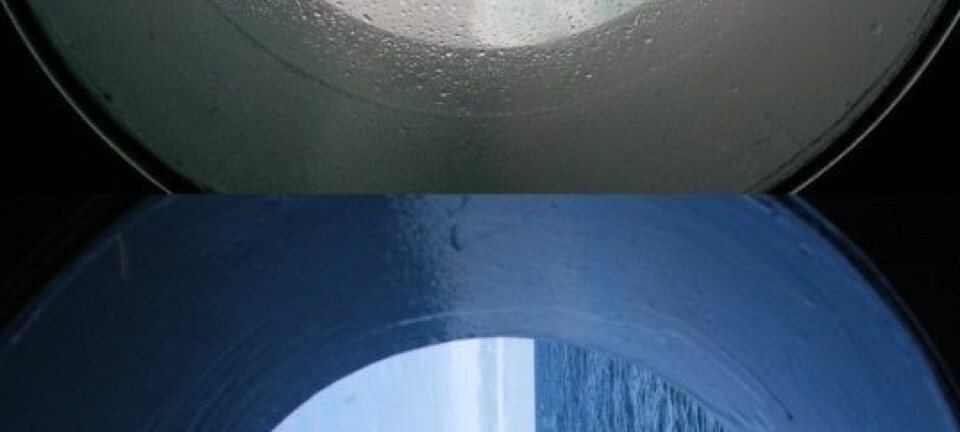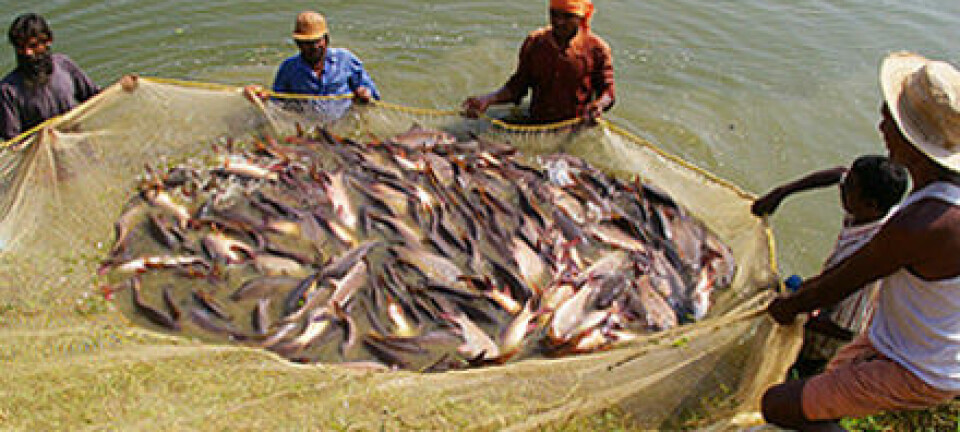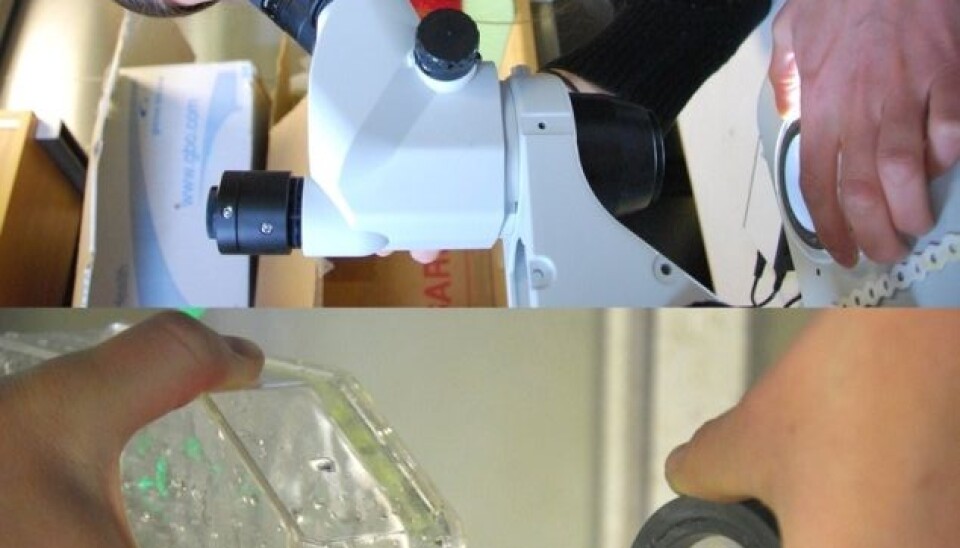
Counting copepod crap
A mind-boggling array of tasks forms the underpinning of our understanding of the factors that affect the climate, both now and as the planet warms. Danes aboard the Norwegian research vessel G.O. Sars are adding to this knowledge by counting specks of zooplankton faeces.
Denne artikkelen er over ti år gammel og kan inneholde utdatert informasjon.
Julie Cornelius Grenvald, a Dane and doctoral student at the University Centre in Svalbard, hunches over a microscope on board the research ship G.O. Sars. She has a click counter in one hand and a pencil in the other.
Grenvald is on watch this morning along with doctoral student Mette Dalgaard Agersted and master's student Frederik Wolff Teglhus, from the Technical University of Denmark.
Grenvald says she originally wanted to become a marine biologist who worked in tropical waters. Agersted wanted to study whales. Teglhus wrote a bachelor's degree thesis on red deer stags.
And here they are in the middle of the Arctic Ocean, in a light summer snowstorm and rolling seas, tallying turds.
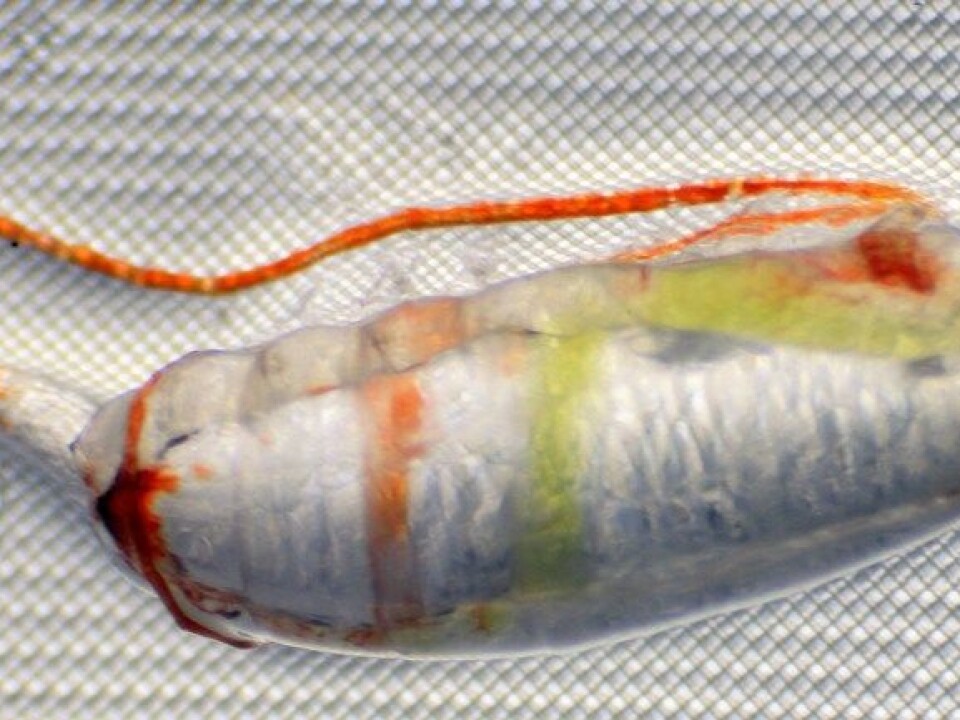
Tiny things that look like air bubbles and miniature green sausages have been collected on the filter beneath a magnifier in front of Grenvald. These bubbles and sausages are actually eggs and the droppings of miniscule zooplankton. Both are being counted and measured.
The Earth’s climate is an elaborate system, with all different kinds of effects and feedback mechanisms, and dynamic factors ranging from the activities of tiny plankton to solar magnetic cycles.
The Danish researchers aboard the G.O. Sars have added the role played by plankton poop to this grand and complex scenario.
Accelerator for ocean storage of CO2
A common copepod – Calanus finmarchicus – is a type of animal plankton, zooplankton, that eats algal plant plankton, or phytoplankton. Like all other plant life on the planet, phytoplankton removes CO2 from the atmosphere, creating organic compounds from the carbon and releasing the oxygen through photosynthesis. In fact, phytoplankton churn out as much oxygen as all other plants combined. The carbon these creatures store returns to the atmosphere as CO2 after the phytoplankton die and decompose in the sea.
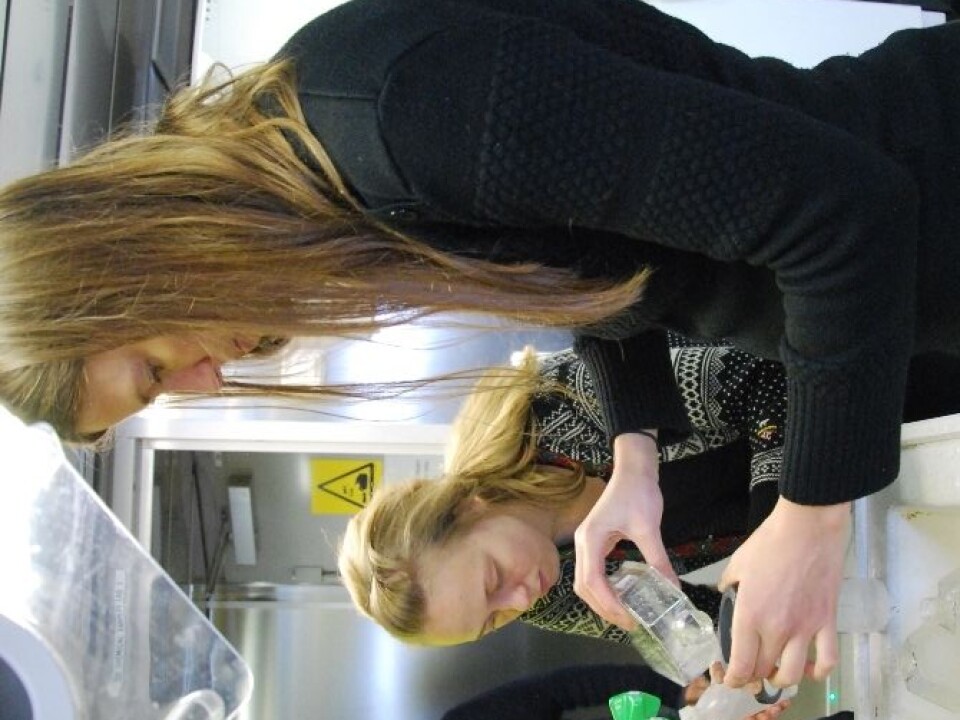
But not all and not always. If the plankton are in deep water they can be preserved in the seabed. The CO2 is thus stored – sequestered − away from the reach of the atmosphere and the immediate climate system.
Some phytoplankton sink to the sea floor. But it can take a long time and it’s impossible to follow the path of any single individual. This is where copepods enter the scene.
When a copepod eats phytoplankton, its wastes are squeezed into what scientists call faecal pellets. The pellets are essentially green strands of plankton poop.
This species of zooplankton is more massive than individual plant plankton or algae cells, and so are the animal's faecal pellets. Whereas a phytoplankton might sink toward the sea floor at a rate of one metre a day, a pellet can plummet 100 metres in that time.
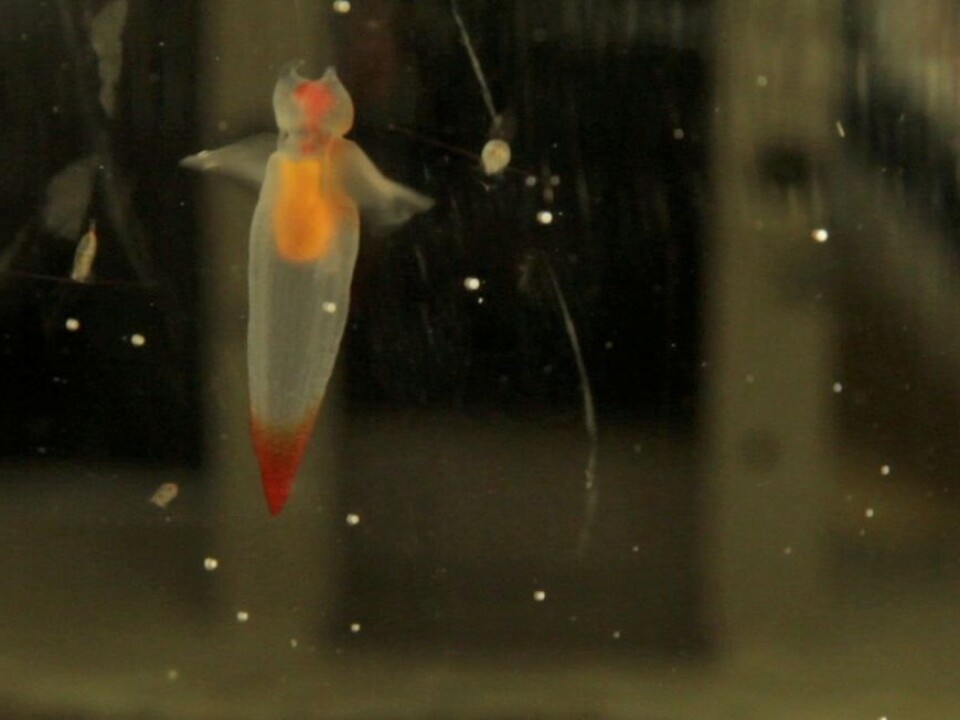
This is why copepods can accelerate the ocean’s carbon storage function. Their poop, plummeting to the seabed, speeds up the transfer of atmospheric carbon into the ocean. But how much carbon? And at what rate?
Length and volume provide an answer
Calanus finmarchicus females that have been captured and held aboard the G.O. Sars have only 24 hours to produce eggs and excrete waste.
Then the water is filtered and the eggs and faecal pellets are counted. The researchers also measure the length and volume of the pellets. This tells them how much the copepods have eaten.
The Danes count the eggs to estimate the quantity of copepods in the ocean. They also measure the success rate of the eggs – the share that actually hatch.
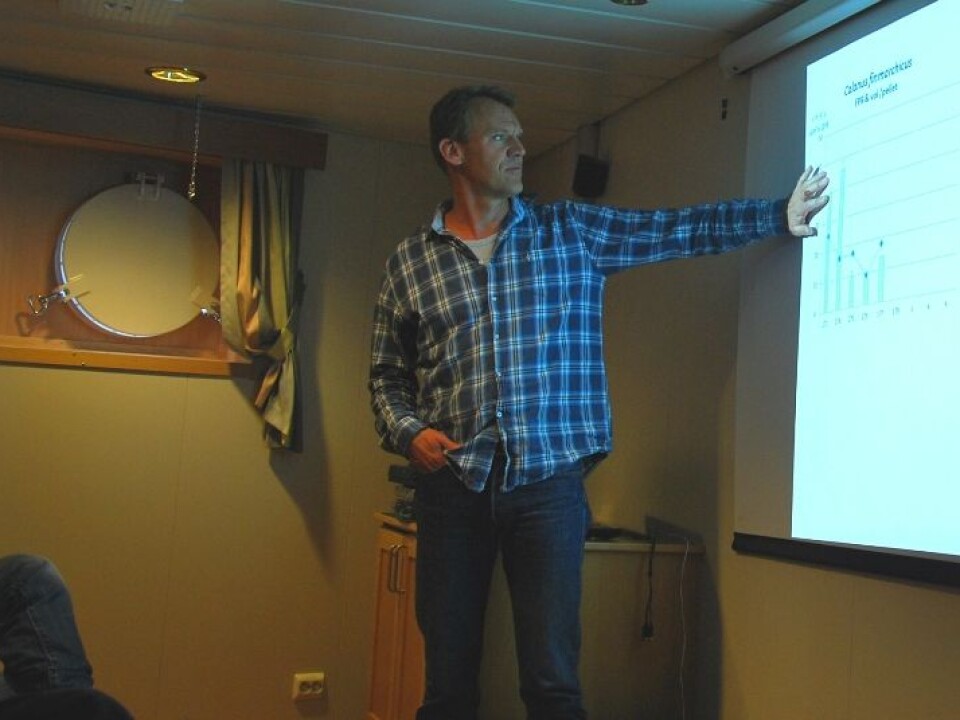
One copepod’s carbon storage capacity, multiplied by the number of them in the sea, will indicate how much carbon the tiny creatures take out of the system.
But like us, these zooplanktons don’t eliminate all they eat. Only about a third comes out their backsides. So it’s necessary to find out what happens to the creature over the course of its life.
Body fat, eggs and hatching
Copepods eat carbon-loaded plankton near the surface of the ocean, but only for a brief time.
For ten months of the year copepods hibernate deep in the ocean, waiting for the upcoming year’s algal bloom. Down in the depths they “breathe out” some of the carbon they ate at the surface. As with the sunken pellets, this carbon dioxide is trapped down below.
This is why Sigrun Jonasdottir also measures the fats stored by the copepods. The fat content of the tiny animals tells researchers where they are in their life cycle, and how long since they reached the surface. This in turn enables Jonasdottir to assess how much carbon they will transport down into the depths.
Eat less in the open sea
Scientific seminars are held roughly every other day on the G.O. Sars. Researchers who are not on watch meet in the auditorium on the third deck, presenting their projects and the headway they’ve made as come in.
Today it’s Torkel Nielsen’s turn. He elaborates on the purpose and preliminary results from the zooplankton egg and faecal pellet count.
“We see that the speed of grazing has dropped considerably since we left the coast,” Nielsen tells his colleagues.
Calanus finmarchicus consumes less algae out here in deep waters than close to land.
“Diatoms are found along the coast, which are good food for Calanus – they are easy to eat and plentiful. But the types of algae we find out here congregate in large mats and they are harder for Calanus to consume. We think this is the reason,” explains Nielsen.
Nobody will ever determine exactly how much carbon in the form of algae and algae poop ends up on the seabed. But scientists can get more accurate estimates.
“Calanus finmarchicus’s contribution to carbon sequestration is not the biggest element of the total system in the ocean, but it is a part that we can actually assess,” points out Nielsen.
--------------------------
Read the Norwegian version of this article at forskning.no
Translated by: Glenn Ostling







